*but didn’t ask because… if you were that interested in Chancery work you wouldn’t have become a family lawyer
'I’m a common-law wife' (No, you’re not)
1. A classic trope of the horror movie is the unexpected return from the dead of something terrifying. Hence, at the end of
Friday the 13th, the seemingly dead serial-killer Jason suddenly emerges from a lake to drag the heroine underwater.
2. Family lawyers may experience a similar sensation when, having sold or destroyed their land law and equity textbooks, trust law is dragged up in one of the following applications:
(a) A ‘cohabitee’ dispute under TOLATA;
(b) A dual claim involving Schedule 1 to the Children Act and TOLATA;
(c) An application within a financial remedy claim for an interim sale
1; and
(d) An intervenor claim (see TL v ML [2006] 1 FLR 1263 at [34], [36]).
3. This creates problems:
(a) trust law is difficult. The concepts can seem esoteric
2 and it is difficult to reconcile the case law
3;
(b) the law is misunderstood by most lay clients: the belief in the (entirely non-existent) rights of a common-law spouse is widespread
4;
(c) Regardless of the familial relationship of the parties, a TOLATA claim is (at least currently
5) ‘Chancery business’. The governing rules in a TOLATA claim are CPR – although these may not necessarily apply in an intervenor claim (
Goldstone [2011] 1 FLR 1926 at [39]);
4. In many ways, a TOLATA claim is the mirror image of ancillary relief:
(a) the claimant faces a burden of proof (cf. quasi-inquisitorial function of a judge in AR
6);
(b) the claim must be particularised at the outset (cf. the often meaninglessly bland contents of a typical concise schedule of issues), and
(c) the outcome is binary with the losing party normally paying the winning party’s costs (cf. FPR Pt. 28.3): a well-pitched without prejudice offer is critical. Stakes are high.
5. So, why do it? There is a lot of it about – especially with intervenor claims, where parties come from communities with a tradition of shared ownership. The contrast between TOLATA and financial remedy work is stimulating and becoming comfortable with TOLATA is broadening and increasingly useful. It also frequently involves encountering Chancery barristers – which can be like the Pilgrim Fathers meeting the Native Americans for the first time: one struggles to have any idea what the other is talking about.
6. This paper is a canter through three main topics:
(1) Overview of the law;
(2) Overview of the procedure;
(3) TOLATA and Schedule 1.
(1) Overview of the law
Court powers
7. Attached at
Appendix 1 is a comparative table of the court’s powers (a) in ‘ancillary relief’
7, (b) under Schedule 1 and (c) under TOLATA.
8. Under TOLATA, the court’s powers are generally quite narrow: it can order a sale of a property, declare the parties beneficial shares in the property, and make orders by way of an account/compensatory orders.
9. Fundamentally, the jurisdiction is subjective and declaratory (i.e. declaring what did the parties intend) as opposed to objective and discretionary (what seems fair to the court).
A short summary of the substantive law
10.
Scenario A: The parties are legal co-owners, and have completed an express declaration of trust in signed writing in accordance with Section 53(1)(b) of the LPA 1925 (e.g. ticking the box on the Form TR1 to confirm the owners hold on trust as joint tenants or tenants in common in equal or other shares):
– Such a declaration will be conclusive unless grounds to rectify/rescind on basis of fraud, mistake etc;
– Meaning that where such an express declaration exists, there is ‘no room’ for the court to consider whether a constructive trust may arise;
See Goodman v Gallant [1986] 1 FLR 513 at 517, 523 and the recent CA decision in Pankhania v Chandegra [2013] 3 FCR 16 which confirms that the law in this area has not changed because of Stack v Dowden etc.
– A declaration that the parties hold the property as joint tenants creates a beneficial joint tenancy which on severance creates a tenancy in common in equal shares
8;
– Even though the main issue may be concluded (which may be a hard pill to swallow where one party has paid the main part of the deposit etc), there still may be triable issues over the timing of sale, compensatory payments (where one party has paid for improvements, mortgage, generally post-separation), and, critically, where there is a minor child, a Schedule 1 claim may be vital.
11.
Scenario B: The parties are legal co-owners but did not enter into an express declaration of trust (alternatively, that there is no signed declaration of trust) – or, alternatively, they entered into a declaration of trust confirming they held the property in ‘unequal shares’:
– See the majority decision of House of Lords (4:1) in Stack v Dowden [2007] 2 AC 432, as summarised by the Supreme Court in Jones v Kernott [2011] 3 WLR 1121 at [51]:
(a) Joint legal ownership = presumed equal beneficial ownership (i.e. 50/50);
(b) This may be displaced by showing the parties had a different common intention when they acquired the home or they later formed a common intention that their shares would change – upon which they relied to their detriment (i.e. constructive trust principles)
(c) Per Stack, a court will not normally depart from 50/50 (i.e. it is a ‘heavy burden’ to disprove). However, the case law does not support this – why are the facts of Stack for example so unusual?
(d) Common intention will be deduced objectively from their conduct, taking a broad view of the co-owners’ dealings with one another (i.e. not restricted to financial arrangements). Context is everything.
12.
Scenario C: The parties are joint legal owners jointly but as an investment and not as their home:
– Traditional resulting trust approach may apply instead of common intention/Stack presumptions: see Laskar v Laskar [2008] 2 FLR 589; i.e. ownership in shares commensurate with the parties’ financial contributions.
13.
Scenario D: One party is the sole legal owner
– Normally, the court will approach issues of beneficial ownership on a constructive trust basis (Abbott v Abbott [2008] 1 FLR 1451 at [4]);
– The essential components are (1) a common intention (which may be express or implied)
9, (2) that the claimant acted to her detriment in reliance
10 of that common understanding, and that it would be unconscionable to deny the claimant’s interest;
– Detrimental reliance is very much a necessary component: Curran v Collins [2015] EWCA Civ 404 at [77], [78];
– Claims frequently turn on the meaning of words – which may be ambiguous and/ or do not necessarily connote ownership ('our home'
11, 'you’ll have a roof over your head'
12, 'this’ll benefit us both'
13)
– While it is possible that the common intention arises after the purchase the court will be ‘slow to infer’ from conduct alone (i.e. without clear evidence of discussion): James v Thomas [2008] 1 FLR 1598 at [24].
Quantification of interest
14. Where the court finds that the legal owner holds a property on constructive trust for a non-legal owner (or where the parties are co-owners without an express declaration), the issue arises as to quantification:
– If it is not possible for the court to ascertain by (i) direct evidence or (ii) by inference, their actual intentions as to how the home would be held, '…the answer is that each is entitled to that share which the court considers fair having regard to the whole course of dealing between them in relation to the property': Chadwick LJ in Oxley v Hiscock [2005] Fam 211 [69].
– Somewhat controversially, in Jones v Kernott the Supreme Court held that such an intention (fair shares) could be imputed to the co-owners even where there was no evidence to support an inference to that effect. [NB The court may only consider imputation at the stage of quantifying interests; not the primary stage of establishing whether a party has an interest or whether there has been a change of intention: Barnes v Phillips [2016] 2 FLR 1292).
15.
Scenario E: Proprietary estoppel
– Sometimes pleaded alongside (or instead of) constructive trust;
– The leading case of Thorner v Majors [2009] 2 FLR 405, i.e. the relevant assurance should be ‘clear enough’, depending on the context where the parties subjective understanding of what they agreed was admissible.
– Where an estoppel arises, the court’s powers are wider in terms of satisfying the equity and can, in some cases, include provision for a lump sum payment or even a transfer of ownership.
Intervenor claims
16. Most TOLATA claims involve parties in opposition to each other (i.e. C seeks an order against D).
17. Most intervenor claims involve three parties, two of whom are supportive (i.e. IV and H agree that the family home is owned by IV; W disagrees), where the opposing party may have no direct evidence of the discussions between the other two. What to do? See
Arif v Anwar [2016] 1 FLR 359 at [43] where Norris J underlines the need for ‘clear evidence that has survived appropriate scrutiny’ and ‘…it is especially important to remember that the general policy of the law is that interests in land should be formally recorded…’.
Engaged couples
18. Where the parties were engaged, don’t overlook the Law Reform (Miscellaneous Provisions) Act 1970
– a very short statute that contained four provisions: (1) abolished actions for seduction; (2) abolished breach of contract for breaking off an engagement; (3) inserted a rebuttable presumption that an engagement ring is a gift; and (4) applied any rules relating to rights of a husband or wife including s 37 of the Matrimonial Proceedings and Property Act 1970, whereby the court can take into account any contribution made in money or money’s worth in acquiring a beneficial interest (
Dibble v Pfluger [2011] 1 FLR 659).
Compensatory payments/ equitable accounting
19. Beyond the issue of beneficial shares, many claims involve an issue of compensation/ equitable accounting for payments one co-owner has made, typically after the purpose of the trust has been brought to an end, which may be for the payment of an ‘occupation rent’. To some extent, this is the equivalent of a dispute over chattels.
20. This must be undertaken with the statute (TOLATA s 12
–15) in mind:
Murphy v Gooch [2007] 2 FLR 934 (although this did not create an exhaustive regime:
Re Barcham [2009] 1 All ER 145). Where one party is in breach of specific arrangements to pay for various items, compensatory payments are possible (
Young v Laurentani [2007] 2 FLR 1211). However, an account may be refused where disproportionate (see
Laskar v Laskar).
21. There are few hard rules in equitable accounting. The exercise is intensely ‘fact sensitive’, and will depend on the court’s examination of evidence, principally the parties’ intentions (
Wilcox v Tait [2007] 2 FLR 871 at [64]). In the ordinary cohabitation case, the court may infer that the parties did not intend to account to each other whilst living together (so that issues of compensation only arse post-separation). Whether this inference is drawn will depend on the facts.
(2) Overview of procedure
Comparative procedure
22.
Appendix 2 is a short overview of comparative procedure of ancillary relief, Schedule 1 and TOLATA.
The eternal question: Part 7 or Part 8?
23. What’s the difference?
(a) Part 7: i.e. involving a claim form on Form N1 and particulars of claim. i.e. pleadings (now ‘statements of case’)
(b) Part 8: is the ‘alternative procedure’ where the claim doesn’t involve a substantial dispute of fact, there is no need for particulars of claim/ defence/ reply (thereby saving some expense, delay and the need to repeat the words 'further or alternatively' in every paragraph). The claim is on Form N208 and is supported by a witness statement will suffice with the claim form on N208.
24. There remains a debate as to which should normally be used. Some take the view that a TOLATA claim must start with Part 8 (see CPR Pt. 64.2 and 64.3, and CPR PD 64A § 1). However, most practitioners (inc. John Wilson QC) take the view that it is a simple matter of applying CPR Pt. 8.2: if there is a substantial issue of fact (and there normally is) use Part 7; if not (for example, where there is an express declaration of trust setting out the ownership shares, and the only issue is timing of sale,) Part 8 should suffice.
25. Try to avoid the hybrid that sometimes occurs when family lawyers to TOLATA: Part 7½, where the claim is issued with particulars of claim and a witness statement.
Tracking
26. After the parties have filed their directions questionnaires, TOLATA claims are allocated, generally to the multi-track, but may be allocated to the fast track, e.g. where the monetary value of the claim is less than £25,000 (CPR Pt. 26.6(4)). The main differences of allocating to the fast track are as follows;
(a) Appropriate for more straightforward cases which do not involve a substantial number of documents;
(b) On allocation, the court will give case management directions including provision for disclosure (including the possibility that there be no disclosure
14), without attendance;
(c) Shorter timetable to trial than multi-track (30 weeks from directions to trial
15);
(d) Trials typically last no longer than a day, before a district judge, with costs summarily assessed at the end;
(e) No costs budgeting.
27. By contrast, a multi-track claim is appropriate for more substantial and complex cases, e.g.
(a) a greater extent of judicial case management (e.g. listing of a case management conference/ costs and case management conference)
(b) Trials are normally heard by a circuit judge (unless the DCJ has authorised district judges to hear TOLATA trials);
(c) Costs budgeting…
Relief from sanctions
28. Perhaps the greatest difference between family and civil litigation is the preponderance of relief from sanctions applications. While the power does exist in the FPR (Pt. 4.6) it is rarely if ever used. By contrast, the bread and butter work of the County Court are applications under CPR Pt. 3.9 where one party seeks relief from a sanction (e.g. an unless order, failure to file a directions questionnaire etc.). The shockwaves from
Mitchell v News Group Newspapers [2014] 2 All ER 430 have to some extent subsided, and the leading case is now
Denton, Decadent and Utilise [2014] 1 WLR 3926 which provides for a three-stage test (per Dyson MR and Vos LJ)
'[24] … A judge should address an application for relief from sanctions in three stages. The first stage is to identify and assess the seriousness and significance of the “failure to comply with any rule, practice direction or court order' which engages rule 3.9(1). If the breach is neither serious nor significant, the court is unlikely to need to spend much time on the second and third stages. The second stage is to consider why the default occurred. The third stage is to evaluate 'all the circumstances of the case, so as to enable [the court] to deal justly with the application including [factors (a) and (b)]'.
What does a TOLATA order look like?
29. Helpfully there is a standard directions order on the Ministry of Justice website
16. There is also a template for a final order (not officially sanctioned) by Rhys Taylor on the ‘Mostyn’ format
17.
30. Typical directions in a TOLATA claim include (* denotes directions which the court may already have made upon receipt of the acknowledgment of service):
(a) Directions questionnaires* which includes whether parties agree to stay for mediation;
(b) Timetabling of further pleadings (e.g. reply) or questionnaires (unusual);
(c) Witness statements generally after pleadings, disclosure: simultaneous exchange)
(d) Listing of CMCC (case/costs management conference), trial.
Costs budgeting
31. Perhaps the greatest culture shock in TOLATA (civil procedure generally) is costs budgeting, and accordance with strict procedure which may mean that if the deadline of filing Precedents H and R in time is missed (7 days), the court may make a costs budgeting order limited to the issue fee (CPR Pt. 3.14). See
Mitchell v News Group Newspapers [2013] EWCA Civ 1537,
Denton, Decadent and Utilise [2014] 1 WLR 3926 and generally, relief from sanctions provisions at CPR 3.9.
Without Prejudice Offers
32. Unlike financial remedy proceedings (FPR 28.3), without prejudice offers must be sent in a TOLATA claim: they are visible the court post-judgment and may be determinative.
33. While it is possible to send a
Calderbank offer (‘without prejudice as to costs’) – see CPR 36.1(2), generally WP offers in TOLATA are sent in accordance with the detailed provisions of CPR Pt 36 offers, which deal with time for acceptance, costs consequences of offer (and refusing offer) etc.
34. Part 36 offers can now be sent on a standard form (Form N242A) . It is essential before sending a Part 36 offer to read CPR Pt 36 and PD 36A in detail as to the effect of making an offer. If in any doubt, it may be safer to send a
Calderbank offer.
Should there be an FDR?
35. It is often thought that the FDR doesn’t fit into a non-discretionary area of law such as TOLATA, where the issues tend to be binary and may turn on the court’s assessment of whose evidence is to be preferred, rather than its own view of what is fair. I recently attended a Chancery Bar Association lecture at which the speaker struggled to explain the FDR procedure to a slightly bewildered audience of chancery lawyers. His conclusion was "there are no rules. You make it up as you go along".
36. Paragraph 18.18 of the new Chancery Guide (2016) explains that, following Lord Justice Briggs’ report into Chancery Modernisation and the expansion of CPR Pt. 3.1(m), a Chancery FDR (‘Ch FDR’) is now an available ADR option in areas such as TOLATA:
'The origins of FDR lie in money claims in Family cases. It has been widely used in claims under the Trusts of Land and Appointment of Trustees Act 1996, inheritance and partnership claims. It is likely to have most application to claims in which there is strong animosity and/or a breakdown of personal or business relationships and trust disputes.'
(3) TOLATA and Schedule 1
37. The sole reported case on what procedure should apply where Schedule 1 and TOLATA intersects is the Court of Appeal decision in
W v W (Joinder of Trusts of Land Act and Children Act Applications) [2004] 2 FLR 321, in which Lord Justice Thorpe commented at [5]:
'… As a matter of sensible management in the county court, if one co-owner invokes one statutory power and the other invokes a different statutory power, sensible management demands that the competing applications be conjoined. If one had to be given leading status, I would have myself assumed that it would be the application under Sch 1, since that statute confers upon the court a much more extensive power, namely the power to make adjustive orders between the co-owners.'
38. This passage is often cited, and often cited, wrongly, in support of the two propositions: firstly, that a Schedule 1 application will invariably be the ‘lead application’; secondly, that the claims should be consolidated.
Which is the ‘lead application’?
39. In
W v W, the parties were beneficial joint tenants. There was no dispute over beneficial ownership: each was entitled to an equal share. The issue was whether an order for sale should be deferred. In such circumstances, the Court of Appeal held that the competing claims under Schedule 1 and TOLATA should be heard together (as opposed to sequentially), with lead status being given to Schedule 1, under which the court exercised wider powers including adjustive as opposed to declaratory orders.
40. However, this is not typical of most Schedule 1/TOLATA claims, where this is a significant issue over beneficial ownership. Faced with a TOLATA claim (where one party may be asserting equal ownership, and the other disputing any interest), it is respectfully suggested that the TOLATA claim must take the ‘lead’, in that the Schedule 1 claim cannot be quantified until the applicant’s own assets (i.e. her share in the property) is established. How this is case-managed in practice (i.e. in a single hearing, or in two separate hearings before the same trial judge) will involve a consideration above all of the overriding objective (CPR Pt.1.1 and FPR Pt. 1.1, which contain some subtle differences).
Consolidated or heard together?
41. In
W v W, Thorpe LJ refers to the Schedule 1 and TOLATA claims as being ‘conjoined’. In practice this is sometimes confused with ‘consolidated’ (CPR Pt. 3.1(2)(g), FPR 4.3(3)(h)), i.e. to combine two claims so that they proceed as one, under one case number.
42. While it is invariably right to direct that TOLATA and Schedule 1 claims should be heard alongside each other (CPR Pt. 3.1(2)(h), FPR Pt. 4.1(3)(i)), the applications should not be consolidated. Per Arden LJ in
W v W at [27]
Where to issue and level of judge?
43. Care should be taken to issue TOLATA and Schedule 1 claims at a court that exercises both Family Court and County Court jurisdiction. The Family Court – and in particular the Central Family Court and its predecessor the Principal Registry of the Family Division – will not issue a TOLATA claim, even where it is connected to an existing family application (an experience with which many solicitors will be familiar).
44. In these circumstances, the claimant can issue both claims at a court which exercises dual jurisdiction such as Wandsworth or Barnet or, outside London, in Guildford or Reading. Alternatively, the claims may be issued at the High Court and then transferred out to a court exercising family and civil jurisdictions, or to one of the remaining District Judges of the PRFD.
45. Where the TOLATA claim is proceeding under Part 7 and has been allocated to the multi-track, the trial must be listed before a circuit judge and not a district judge, unless this has been authorised by the designated civil judge (whereas a fast track trial may be heard by a district or circuit judge). There is no similar restriction with respect to a Schedule 1 final hearing.
Privacy and confidentiality
46. TOLATA claims are normally held in open court (CPR Pt. 39.2(1)) and statements of case (excluding attachments) and court orders are public documents which may be obtained from the records (CPR Pt. 5.4C).
47. By contrast, a Schedule 1 application is normally held in private (FPR Pt. 27.10) subject to the discretion of the individual judge (
Luckwell v Limata [2014] 2 FLR 1252), and no document is available to the public save with the permission of the court (FPR Pt. 29.12). It is also worth recalling that a Schedule 1 claim comes within the definition of ‘children proceedings’ for rules concerning the instruction of an expert (i.e. FPR PD 25C and not FPR PD 25D).
Disclosure
48. Disclosure in Schedule 1 will depend on whether the application remains on the abbreviated Chapter 5 procedure, in which case it will involve the attachments to Form E1 (FPR Pt. 9.19(2)(b)), together with such disclosure as the court directs at the first hearing (FPR Pt. 9.20). A transfer to Chapter 4 will require the more extensive Form E disclosure with provision for questionnaires.
49. CPR Pt. 31, PD 31A and PD 32A sets out the detailed rules on disclosure and inspection which apply to civil claims such as TOLATA. Standard disclosure is defined at CPR Pt. 31.6, which is generally provided by way of List and provision for inspection (CPR Pt. 31.10). For reasons such as proportionality the court may depart from the requirement to give standard disclosure (CPR Pt. 31.5).
50. Given that the court’s enquiry in Schedule 1 and TOLATA is so different, particularly when there is an issue as to whether the claimant can establish a beneficial interest, provision for both ‘family’ and ‘civil’ disclosure (e.g. replies to questionnaire and disclosure by list) can be unavoidable.
Which bundles direction applies?
51. As is now notorious, in a family case , the court bundle must follow the detailed rules set out at FPR PD 27A including that a bundle should not normally exceed 350 pages (para. 5.1)). Judges hearing family cases abhor the practice of preparing a core bundle with further ‘library’ bundles (
J v J [2014] EWHC 3654 (Fam) per Mostyn J at [51]).
52. By contrast, the rules regarding bundles in civil claims, such as TOLATA, as set out at CPR PD 39A para 3, have no similar requirement for a single bundle, or a maximum page limit, save that 'the bundle should normally be contained in a ring binder or lever arch file' (CPR PD 39A, para 3.6). The Chancery Guide
expressly provides for a separate core bundle to be prepared where the volume of material requires (Chancery Guide 2016, para. 21.65 to 21.72).
53. Which applies where the court is faced by dual claims Schedule 1 and TOLATA? Arguably, the civil rules – although see excoriating judgment of Holman J in
Seagrove v Sullivan [2015] 2 FLR 602 for the contrary view.
Finally…
54. If a TOLATA claim feels too horrific and/ or risk-laden, consider arbitration under the IFLA scheme where the presumptive rule is that each side pays their own!
Supporting documents
Appendix 1: Comparative powersAppendix 2: Comparative procedure
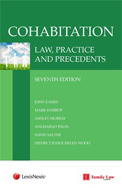
Cohabitation: Law Practice and Procedure
provides commentary, checklists, procedural guides and precedents on the subject in a single volume. The 7th edition is available to order here.
1 See BR v VT [2015] EWHC 2727 (Fam)
2 Stack v Dowden (CA) [2006] 1 FLR 254, per Carnwath LJ at [75]
3 Carlton v Goodman [2002] 2 FLR 259, per Ward LJ at [29]
4 Over half of the population according to a 2013 study (OnePlusOne, 58%)
5 Although see recent recommendation by Briggs LJ that TOLATA and Inheritance Act claims should come within the shared scope of the Family and Chancery Divisions (not Chancery exclusively)
6 Parra v Parra [2003] 1 FLR 942 at [22]
7 Strictly speaking ‘financial orders’, although this term remains Mostyn J’s preferred terminology: see AB v CB and Trustees of the X Trust [2014] EWHC 2998 (Fam) at [1]
8Stack v Dowden at [49]
9 Drake v Whipp [1996] 1 FLR 826, Lloyds Bank Plc v Rosset [1991] 1 AC 107 at 133, Stack at [26]
10 Grant v Edwards [1987] 1 FLR 87
11 Churchill v Roach [2004] 2 FLR 989
13 Negus v Bahouse [2008] 1 FLR 381
13 James v Thomas [2008] 1 FLR 1598
14 CPR Pt. 28.3(2)
15 CPR Pt. 28.2(4)
16 https://www.justice.gov.uk/courts/procedure-rules/civil/standard-directions/list-of-cases-of-common-occurrence
17 http://www.jordanpublishing.co.uk/practice-areas/private-client/news_and_comment/a-proposed-draft-final-tolata-order






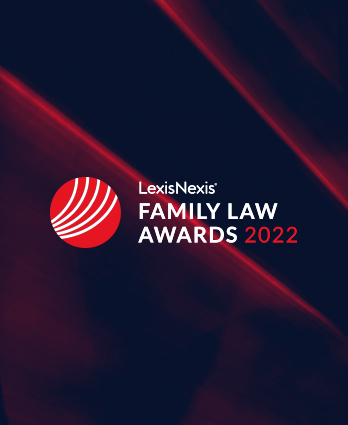
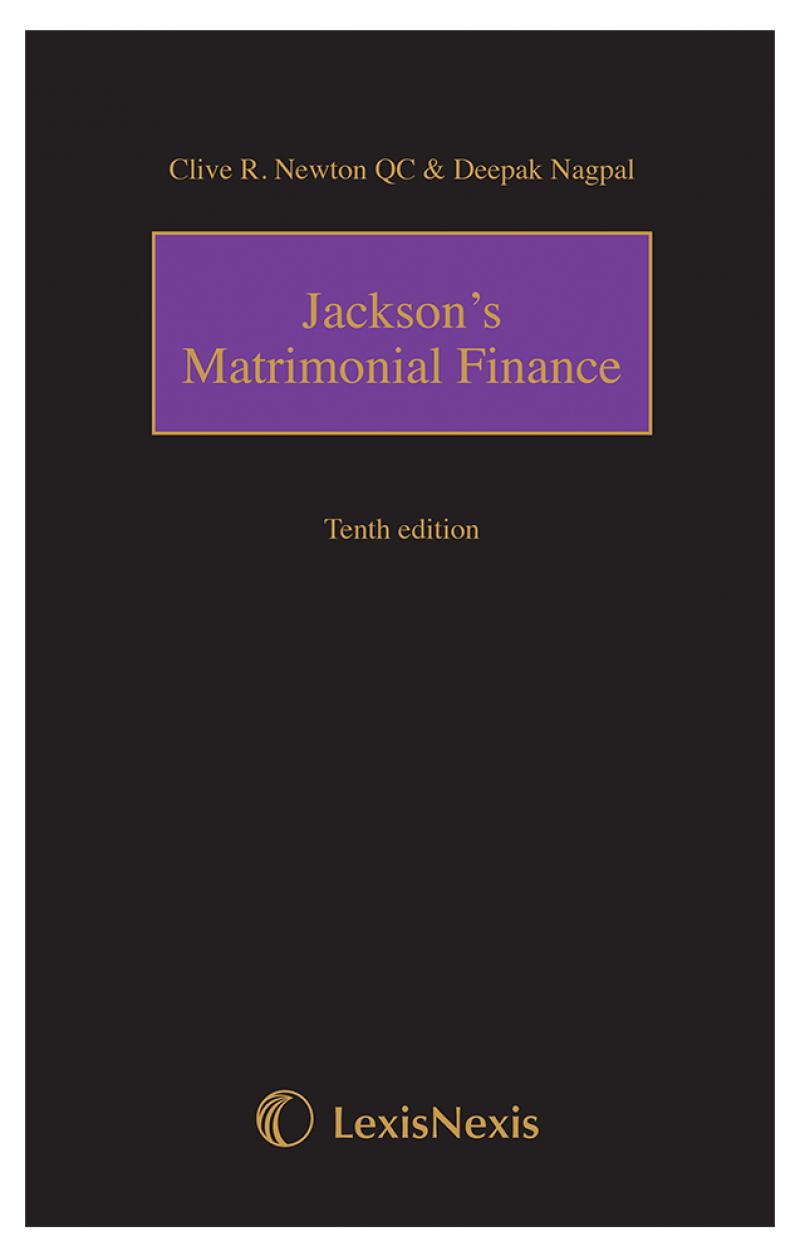



 10 MAR 2025
10 MAR 2025
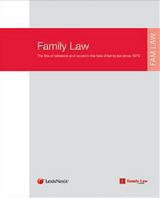
 10 MAR 2025
10 MAR 2025

 10 MAR 2025
10 MAR 2025

 10 MAR 2025
10 MAR 2025

 10 MAR 2025
10 MAR 2025
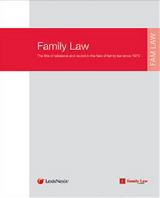







 Cohabitation: Law Practice and Procedure provides commentary, checklists, procedural guides and precedents on the subject in a single volume. The 7th edition is available to order here.
Cohabitation: Law Practice and Procedure provides commentary, checklists, procedural guides and precedents on the subject in a single volume. The 7th edition is available to order here.




Leave a commentOrder by
Newest on top Oldest on top